Motorcycle Investor mag
Subscribe to our free email news
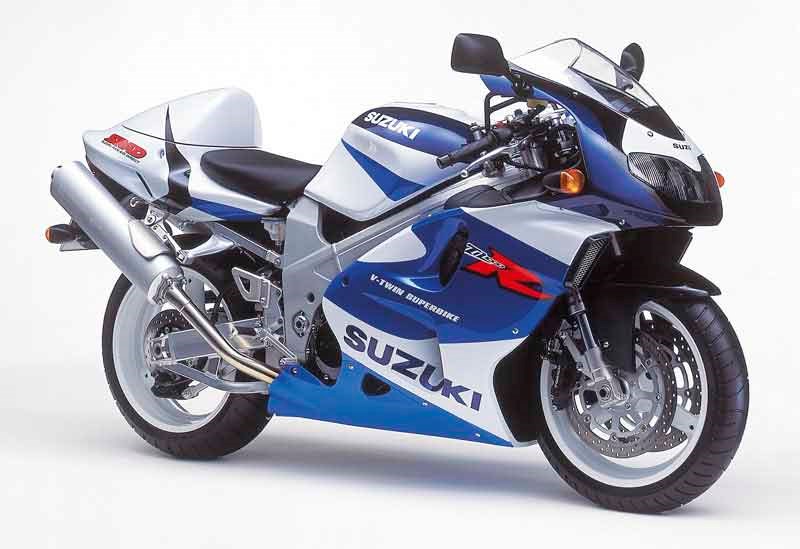
Future collectibles – Suzuki TL series twins
by Guy ‘Guido’ Allen
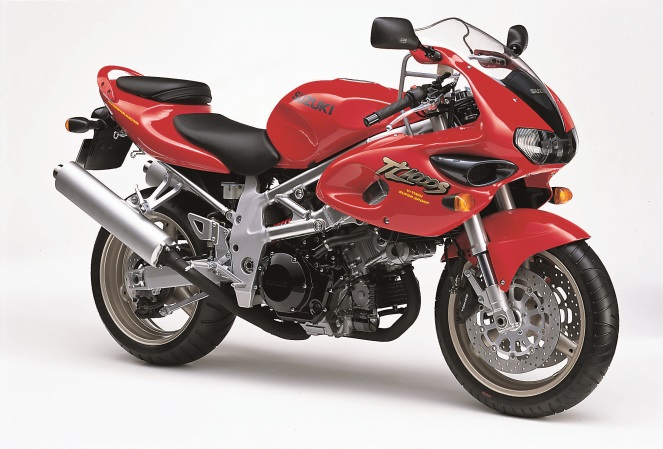
Fast & flawed
Suzuki’s TL1000 series may have bombed in the showroom but they’re now decent buying
You have to think back to what was on the market in 1996-1997 to understand these bikes. If you wanted a big sports V-twin, your choices were limited. You could have a Ducati of course, but they were pricey and seen as both fragile and expensive to maintain. Beautiful and desirable, but a handful.
Aprilia was said to be on the verge of launching its first serious litre class V-twin, and there were no, repeat no, sports V-twins in the Japanese catalogues. Buell was around, but it was using hotted-up Sportster motors, for crying out loud. Nice idea, but a serious day with the throttle pinned could see the poor old Sporty powerplant in dire need of a workshop. Moto Guzzi? Love ’em, but not really in the same league.
Okay, I’ll say it: there were no sports V-twins with Japanese standards of reliability. Given Ducati had long been dominating the world superbike series (WSBK) with just such a layout and was, despite pricing and running costs, selling good numbers, you didn’t have to be a genius to see an opening in the market.
Typically, we suddenly went from famine to feast. Honda, Suzuki and Aprilia announced performance one-litre twins more or less at the same time. It was a good day for conspiracy theorists: maybe there really is a world coven of bike manufacturers who deviously plot ways to annoy their customers. All three in fact had ambitions to break Ducati’s near-monopoly on WSBK.

Suzuki’s entry – announced in 1997 for the 1998 model year – was the TL1000S (above), a 90-degree V-twin with a mixed architecture of chain and gears driving the cams. However it wasn’t the engine specs that got everyone’s attention – instead it was the rear suspension. Working with the sheer length an along-the-frame V-twin layout implies, Suzuki decided to make the space required for the rear suspension more compact by separating the spring and damper.
That on its own was hugely controversial in the bike world. Conservative down to its pin-striped underwear, the motorcycle market has never been great at coping with ‘new’ ideas – even if they’re well-proven in the automotive world. Suggest to a car engineer that having discrete spring and damper units was in some way radical, and they’d give you that polite stare. The one that says you’re an idiot.
Nevertheless, Suzuki did kind of set itself up for failure – not by going for something different, but by being a little innovative and not getting it right. Choosing a rotary damper meant there was a lot of attention on the rear suspension and, in the initial batches of the S series, it didn’t measure up. There’s nothing wrong with rotary dampers as such, but the unit chosen by brand S had a tendency to go to lunch with hard use.
In the end, the problem became the subject of international headlines, with MCN in the UK leading the charge. You generally had to ride the bike hard for more than an hour for the problem to surface and, when it did, it was undeniable. The damping simply went to lunch. It was still okay for gentle riding, but big hits at high speed sent the thing to pogoland. Let it cool down and everything was fine again.
In some (but not all) markets, where serious crashes had been reported, Suzuki even went to the extent or recalling early S models, reworking the rear damper and fitting a steering damper.
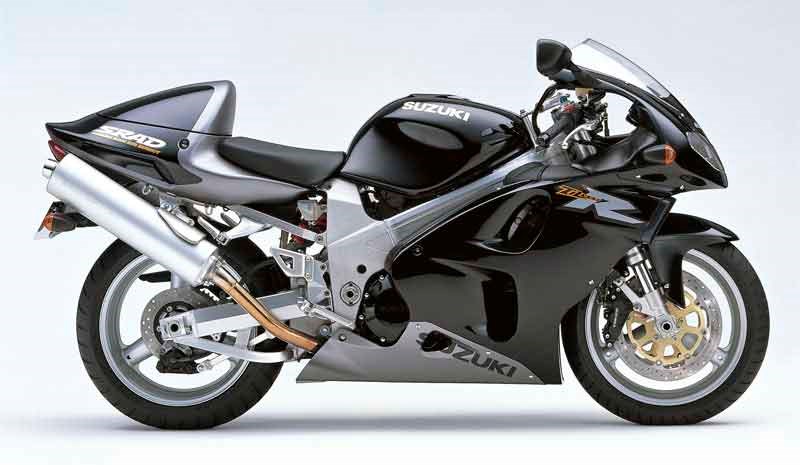
There was a whole mini aftermarket industry started up to deal with the issue and Suzuki itself quickly ended up sorting it. In fact it was comprehensively solved by the time the TL1000R (above – more on that later) came out in 1998-99. But the damage to the reputation of the series was done.
However we're told there was a service bulletin issued, recommending that the torque on the damper mounts be checked regularly, to avoid possible cracking. At the same time, early S models had a rep for being patchy when it came to finish.
Do you know why that was a crying shame? Because damper issues aside, a sorted TL1000S was an absolute rocket and great fun when everything was working right. Of the three offerings that came out more or less at the same time (add Honda’s VTR1000 and Aprilia’s RSV Mille), it had the engine with the best character. It’s a difficult thing to define, but the 125-horse twin had a unique snarl and was an absolute hoot to play with. Throw in Suzuki’s famously slick transmissions and you had a very serious performance bike.
My all-time favourite ride on one was part of a multi-bike comparison with the Australian Motorcycle News crew, back when these things were new. At one stage we went hooting through a wide open curve in the middle of nowhere at Warp 3 to be suddenly confronted by a very large police sergeant, planted firmly in the middle of the road holding up his hand. Oh dear.
There was no denying we’d been pressing on, given the rabble pulled up in a pretty messy way with smoke coming off the rubber. “This is a crime scene,” he announced. Seemed a bit harsh, but we could see his point. Spotting the looks of resignation on our faces, he cleared up the confusion: “No, you don’t understand, there was a murder nearby and we’re walking the witness through the crime scene. You’ll have to wait a while.” I’m sure he enjoyed messing with us.
Anyway, back to the TL. It was an absolute ball to ride. The rear suspension on our example was performing okay and there was no denying it was one seriously fast motorcycle, more than able to give the equivalent Ducati (a 916) a really hard time.
Dampers aside, the model has proven to be robust. Servicing of any V-twin is a little awkward, given you’re dealing with two heads rather than one, and the rear is always sitting under a heap of bodywork that has to be removed for access.
(Ducati’s 916 is the all-time champion for ease of access in this regard as it is literally designed to come apart. Though the desmodromic valve actuation raises complications that negate the advantages.)
Probably of greater concern is a very few bikes have been known to crack frames at the headstem and near the rear damper mount. They’re very much in the minority and can be repaired, but I’d be casting a critical eye over any purchase.
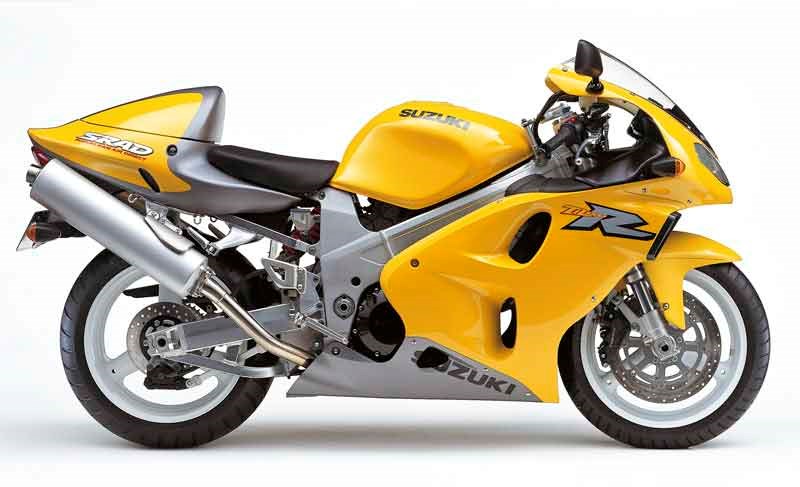
With the reputational damage done by the S, the launch of the R version (above) was always going to be rocky. It wasn’t helped by the model’s looks, which in those pre-Hayabusa days were a visual shock. It seemed incredibly long, thanks to the combination of a tapered snout and an incredibly tall tailpiece that finished in an odd little ducktail. Frankly, a lot of people hated the looks. It nevertheless had its fans, including yours truly.
I had the good fortune to take one of the first examples in the country for a very fast tour of Tasmania, including just about every good riding road the isle has to offer. Though it wasn’t the most nimble bike on the planet, it was dead stable at its considerable top speed (240-plus), turned in well enough when given a bit persuasion, braked well for the time and proved to be a thoroughly enjoyable superbike. It claimed an extra 10 horses over the S, for a figure of 135, which meant it wasn’t the most powerful bike on the planet but nevertheless had serious grunt packed into its 192kg claimed dry weight. Suzuki obviously tweaked the tuning, while fitting forged pistons and stronger conrods to this variant.
By this time the suspension issues had been sorted and this was a seriously fun ride. Plus, we're talking about a very different chassis, including a new frame.
Values for TL series can be patchy, with prices for S models being lifted along with the rest of the market, rather than through any virtue of the bike itself. You can pick one up for around Au$5-8k . (US$3500-5600, GB£2700-4300) However owners of R models are a little more demanding, with some justification, asking anything from $5k through to Au$10k (US$7000, GB£5400). Because there’s a bit of cult status attached to the R, we’re seeing the odd exceptional example cracking the 10 barrier.
With minimal race history and a patchy reputation, I’m not backing these things as big investments. However, the early performance V-twins from the Japanese makers have some historical interest and the R model in particular is a good ride. Look at it as having a bit of fun while you park your money somewhere and you’ll probably do okay. Dammit, there’s another one I want to add to the shed!
***

TL trivia
Suzuki intended the TL1000R to be its platform for the world and American superbike championships, replacing the GSX-R750. It briefly raced in the USA and Canadian championships, but the program ended after its first season. See a review of the Team Corona racer here.
The engine went on to power the Bimota SB8R (150 units made) and score its only WSBK win, in the hands of Anthony Gobert at Phillip Island in 2000.
The engine platform was also to power Cagiva’s Raptor and V-Raptor series (above).
Looking for owner and service info? Try Steve’s TL1000S pages on the web. It covers S and R models and has a wealth of info.
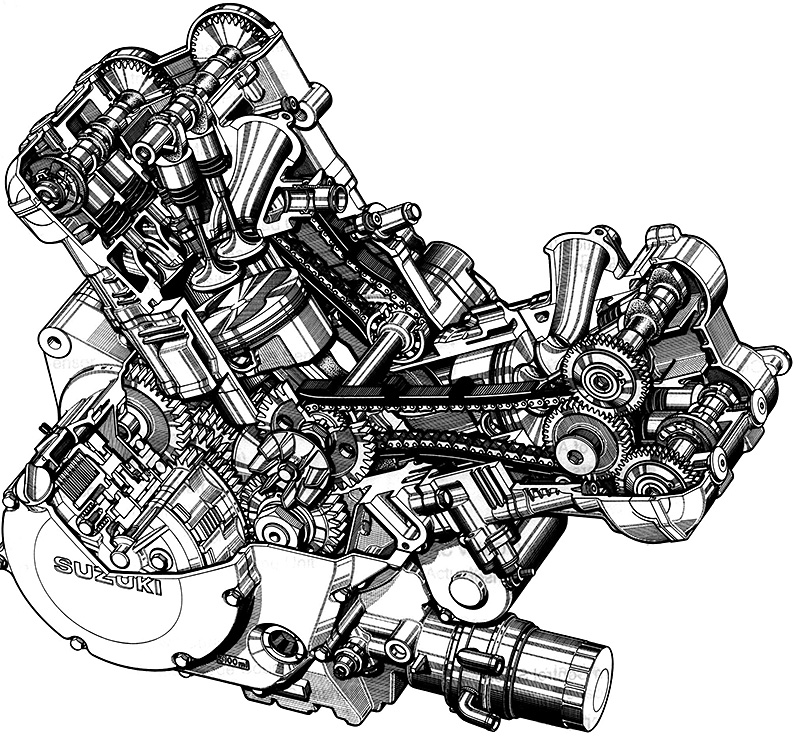
SPECS:
Suzuki TL1000R
ENGINE:
TYPE: Liquid-cooled, four-valves-per-cylinder, 90-degree V-twin
CAPACITY: 494cc
BORE & STROKE: 98 x 66mm
COMPRESSION RATIO: 11.7:1
FUEL SYSTEM: Fuel injection
TRANSMISSION:
TYPE: Six-speed, constant-mesh,
FINAL DRIVE: Chain
CHASSIS & RUNNING GEAR:
FRAME TYPE: Aluminium twin-spare
FRONT SUSPENSION: 43mm USD fork with full adjustment
REAR SUSPENSION: Separate spring and rotary damper units with full adjustment
FRONT BRAKE: 320mm disc with 6-piston caliper
REAR BRAKE: 220mm disc with twin-piston caliper
DIMENSIONS & CAPACITIES:
DRY WEIGHT: 192kg
SEAT HEIGHT: 825mm
WHEELBASE: 1394mm
FUEL CAPACITY: 17L
WHEELS & TYRES:
FRONT: 120/70 ZR17 cast alloy
REAR: 190/50 ZR17 cast alloy
PERFORMANCE:
POWER: 101kW at 9500rpm
TORQUE: 105Nm at 7500rpm
For Huge fun
Against patchy reputation
-------------------------------------------------
Produced by AllMoto abn 61 400 694 722
Privacy: we do not collect cookies or any other data.

Archives
Contact




